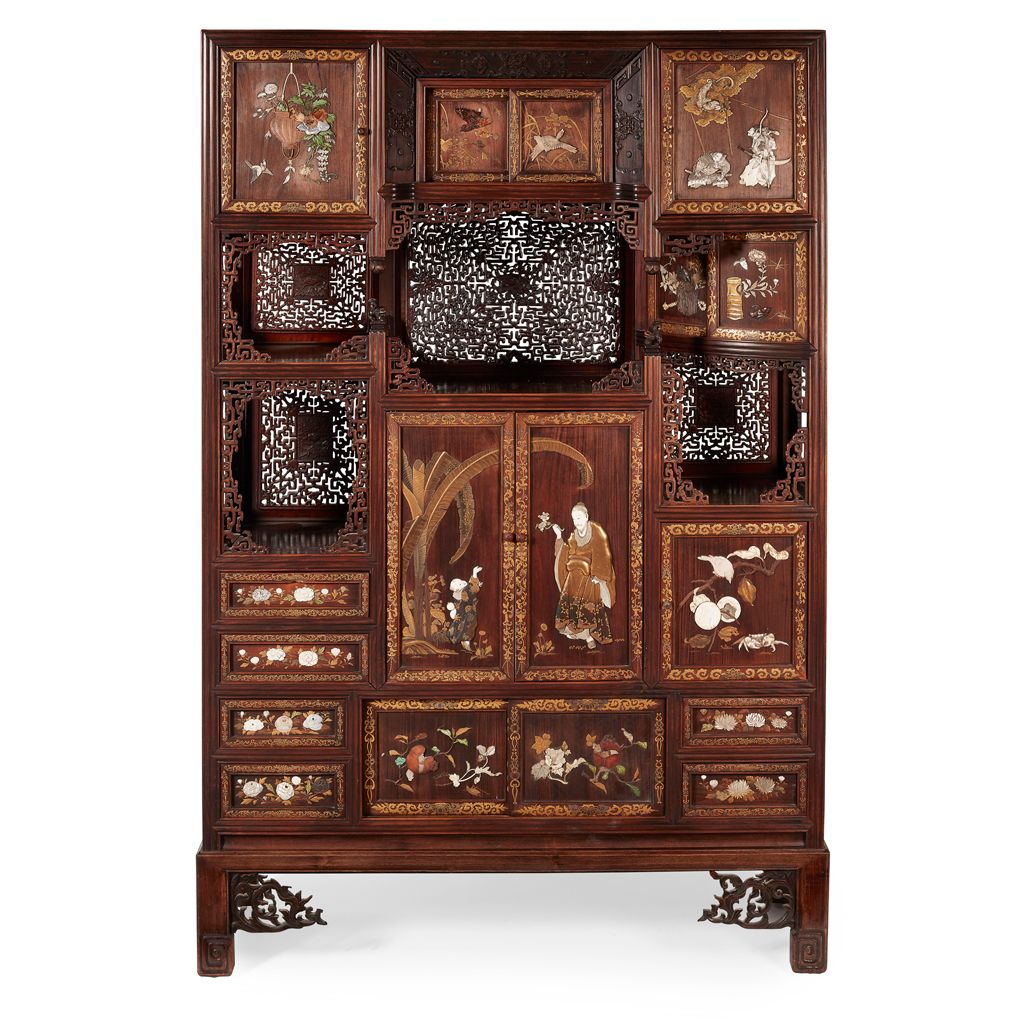Shibayama refers to the intricate carving and minute encrustation of various materials on to a ground material. The inlay typically consists of mother-of-pearl, ivory, tortoiseshell and coral, the combination creating a delightful contrast of colours and textures. Set in high relief above a wood, lacquer and sometimes ivory base, the inlay depicts figures, flora and fauna with a highly appealing three-dimensional effect.
Shibayama as an art form was founded by the late Edo period craftsman Ōnoki Senzō, who named this technique after his hometown Shibayama in present-day Chiba prefecture. Senzō soon became so celebrated for his invention that he then decided to adopt Shibayama as his surname. Following its introduction at the 1867 Paris World Expo, shibayama treasures were to enjoy great fascination and appreciation from Western collectors, and facilitated by the opening up of Meiji Japan, many Shibayama pieces were exported to Europe.

Our March 2018 Asian Works of Art auction featured several fine examples of shibayama art from private UK collections.

Other highlights include a tanto kashirae, inlaid with a pair of pigeons perched on blossoming cherry branches below an Ikebana basket and a large wooden display cabinet comprises an asymmetrical arrangement of shibayama-inlaid hinged and sliding doors depicting samurais, flowers and birds.


